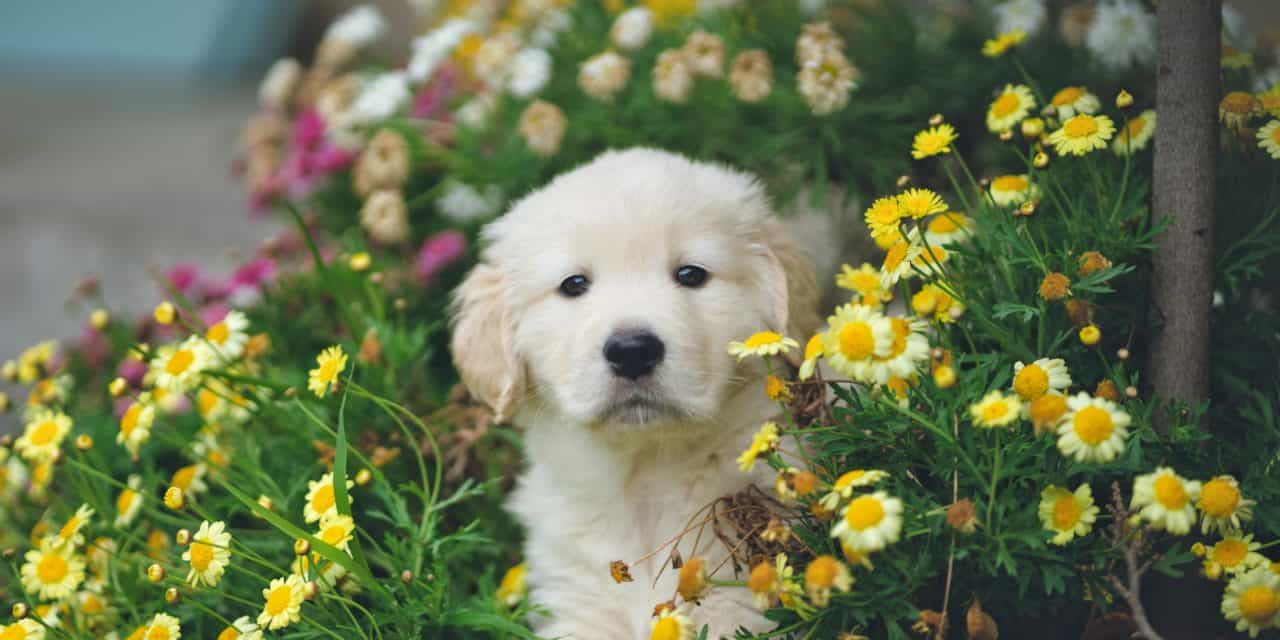Spring is here! From plant and flower safety to allergies and pet sunscreen, PETstock vet Dr Alison Kemp has compiled these spring pet care tips to keep our four-legged friends safe from any spring related illnesses, bites, or irritations.
Spring pet care tips
1. Plant and flower safety – Many Aussie pet parents have also adopted the ‘plant parent’ phrase and are likely to purchase or grow more plants during spring, but several of the most popular household plant and flower species can be toxic and even fatal to pets. There are many non-toxic options safe for both dogs and cats, these include Blue Echeveria, Burro’s Tail, Bamboo, and Ponytail Palm. Symptoms of plant or flower poisoning include vomiting, diarrhea, depression, or other abnormal behavior, seizures, excessive drooling, or weakness. If you suspect that your pet has ingested a poisonous plant or flower, please contact your vet immediately.
Pets4Life has more information on cats and toxic plants or dogs and toxic plants.
2. Spring allergies – Just like humans, pets can also experience seasonal allergies. Allergies occur when a pet’s immune system identifies something in the environment as threatening or dangerous. Common springtime allergens for pets include grass, weed and tree pollens, dust and mold. Most symptoms include sensitive skin (red or irritated skin), bald or thinning patches of the fur, itchy and smelly ears, and excessive licking of an areas on their body. If your pet does suffer from seasonal allergies, ensure you don’t over-groom them and irritate their skin further and always use a gentle pet formulated shampoo. For further advice on treating your pets’ allergies, please speak to your local vet.
3. Fleas & ticks – Fleas and ticks are common in Australia and can make your pet dangerously ill. Ensure all cats and dogs in your household have been treated with the correct flea and tick protection before allowing them out in the yard. Consistency is key, so be sure you treat your pet now and continue monthly applications throughout the rest of the year.
4. Snake bites – Now that winter is behind us, our scaly friends will be starting to make an appearance. Pet owners should always be on the lookout for snakes, which like to sunbathe on warm days, particularly on warm rocks. Inquisitive dogs not keeping a safe distance may get bitten, so keep an eye on your buddy and monitor them for signs of a snake bite including lethargy, wobbliness, drooling, and vomiting. If you suspect your pet has been bitten by a snake it’s essential to seek emergency hospital care immediately.
5. Bee stings – With budding flowers in full swing, bee stings are a common threat pets face, particularly for curious pets that love spending time in the backyard. Just like humans, pets’ physical reactions will differ in severity when stung by a bee. If your pet has been stung and you’re unsure whether they are allergic or not, contact your local vet and describe your pet’s symptoms so they can make an accurate assessment. For pets with allergies to bees, it’s essential they are closely monitored outdoors in the event they succumb to a bee or wasp sting which can be fatal, particularly in small breed animals. If you suspect your pet has been bitten seek vet advice immediately.
6. Microchip, collar, and ID tags – With the weather warming up, pets and owners are likely to take longer walks and visit parks more frequently. Ensuring your pet is microchipped, with up to date details, and wearing their collar and ID tag will help keep them safe if they wander off.
7. Pet sunscreen – Pets with light skin and short or thin hair are particularly prone to sunburn which can lead to skin cancer or other sun-induced skin diseases. Although the sun may feel tame in spring, it’s important that pet owners carry pet sunscreen with them on their daily walks and apply it in the months leading up to summer to decrease their chances of obtaining a fatal skin disease.
8. Spring cleaning – It’s the one time of year that calls for a deep house clean! When cleaning, ensure you are keeping all chemicals and cleaning products out of your pet’s reach, especially if you are using soap water in a bucket that is easily accessible to pets. If it’s a nice day, opening the windows while you’re cleaning will help prevent your pet from inhaling any harmful chemicals.







